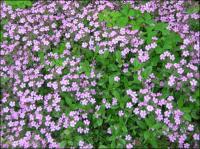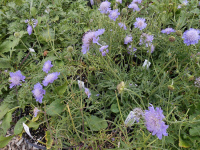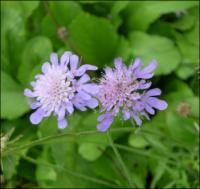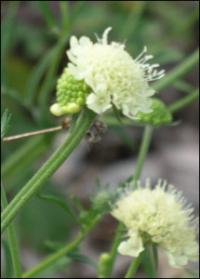Shop
Showing 649–656 of 788 results
-
Sanguisorba parviflora syn S tenuifolia var. parviflora, S. tenuifolia var. alba White Japanese burnet Z 4-8
Drooping white spikes (I know, drooping and spike are an oxymoron but you get the idea) atop tall stems and above narrow, dissected foliage as beautiful as the flowers. Blooming in July into September.
Drooping white spikes (I know, drooping and spike are an oxymoron but you get the idea) atop tall stems and above narrow, dissected foliage as beautiful as the flowers. Blooming in July into September.
Size: 3-5' x 18"
Care: Sun to part shade in moist well-drained soil
Native: Japan, Korea, Russia
Wildlife Value: attracts bees and butterflies, Deer resistant.Collected by 1874. (Maxim.)
-
Sanguisorba tenuifolia Great burnet, Japanese burnet Z 4-8
One to two inch long spikes - purplish red, in late summer
ARCHIVED
Note: This is a plant not currently for sale. This is an archive page preserved for informational use.
One to two inch long spikes – purplish red, in late summer
Size: 4-6’ x 12”
Care: sun to part shade in moist well-drained soil
Native: Northern AsiaSanguisorba is Latin meaning to soak up blood, for the plant’s reputed ability to clot blood.
Collected by 1851.
-
Santolina chamaecyparissus Lavender cotton , Cotton lavender Z 5-9
Grown for its ornamental grey foliage, yellow flowers in midsummer
Grown for its ornamental grey foliage, yellow flowers in midsummer
Size: 20” x 36”
Care: Full sun in well drained soil
Native: Mediterranean area
Awards: Recipient of the Royal Horticulture Society Award of MeritChamaecyparissus means dwarf cypruss to describe its appearance. Shrub grown in English and Italian flower gardens since 1500’s. Italians planted it with other shrubs to form mixed hedges. Grown in American colonial gardens since 1670’s.
-
Saponaria ocymoides Rock soapwort Z 4-9
Small bright pink flowers bloom along dense, creeping branches hugging the ground in late spring into summer.
OUT OF STOCK
Small bright pink flowers bloom along dense, creeping branches hugging the ground in late spring into summer.
Size: 3" x 18"
Care: Sun, well-drained soil
Native: Spain to Yugoslavia
Awards: Received England’s Royal Horticultural Society Award of Merit.Both the botanical and common names come from the plant’s use as soap, the leaves “yeelde out of themselves a certain iuice when they are bruised, which scoureth almost as well as sope.” Gerard (1633). Soapwort is still used today by antique and art restorers for its gentle cleaning: chop dried leaves and roots, boil in water for 5 minutes, and then agitate to make suds. William Robinson, father of today’s mixed perennial border gardens, praised this as bearing “masses of rosy blooms.”
-
Scabiosa columbaria f. nana Dwarf dove pincushions Z 4-8
Lavender- blue pincushions
ARCHIVED
Note: This is a plant not currently for sale. This is an archive page preserved for informational use.
Lavender- blue pincushions on this short, front-of-the-border flower that blooms for four, yes, 4, months, June to September. Deadhead to promote reblooming.
Size: 6-12” x 12-18”
Care: sun to part shade in moist well-drained alkaline soil
Native: Europe
Wildlife Value: Attracts bees, butterflies and birdsDifferent colored ones including lavender and pink described in The Garden 1872.
-
Scabiosa japonica var. alpina Alpine pincushion flower Z 4-9
Lavender-blue pincushions over mound of gray-green foliage, blooms June-September
ARCHIVED
Note: This is a plant not currently for sale. This is an archive page preserved for informational use.
Lavender-blue pincushions over mound of gray-green foliage, blooms June-September
Size: 6-12” x 12”
Care: sun to part shade in well-drained soil
Native: Japan’s subalpine meadows
Wildlife Value: attracts bees, butterflies and birdsDescribed by Japanese botanist Hosayoshi Takeda before 1962.
-
Scabiosa lucida Pincushion flower Z 4-9
Lilac pincushions all summer & fall
OUT OF STOCK
Lilac pincushions all summer & fall, non-stop
Size: 24" x 12"
Care: full sun in well-drained soil.
Native: Central and Eastern Europe
Wildlife Value: attracts butterfliesScabiosa from Latin scabies referring to the itch caused by a mite infestation, which another Scabiosa species allegedly cured. This species 1st described in a French publication in 1779.
-
Scabiosa ochroleuca Cream pincushion Z 4-9
Looking for a non-stop bloomer? Cream petals compacted together bloom atop tall, wiry stems from June to October
Looking for a non-stop bloomer? Cream petals compacted together bloom atop tall, wiry stems from June to October
Size: 18"-24" x 18"
Care: sun to part shade in moist well-drained soil. Drought tolerant.
Native: Europe & Asia
Wildlife Value: attracts butterfliesThe name scabiosa from Latin scabies refers to the mite infestation that this plant was supposed to cure; ochroleuca means “yellowish white.” First described by Swiss botanist Bauhin Caspar (1560-1642) in Pinax theatri botanici in 1623.





